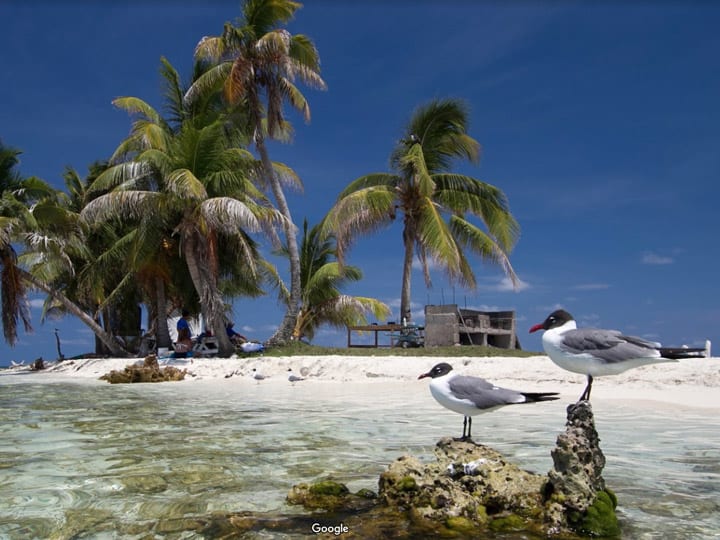- Dive into a World of Underwater Wonders! Signup Today..
The Belize Barrier Reef is an extraordinary place to explore. It is home to a vibrant ecosystem of colorful coral, a variety of fish species, and even reef sharks and many other Marine life. Along the reef and its neighboring islands, you’ll find numerous snorkeling and diving sites waiting to be discovered. However, it’s important to be aware of the environmental challenges the reef faces, such as coral bleaching and human-made issues like ships damaging the reef.
Despite these challenges, the Belize Barrier Reef remains a popular destination for vacationers. It is globally renowned for its fantastic snorkeling and diving opportunities. Tour operators along the coast of Belize offer tours to explore the Belize Barrier Reef and the tropical islands it protects.
As you fly into Belize, you’ll likely catch a glimpse of the Belize Barrier Reef just before landing. Stretching approximately 180 miles, it is the second largest barrier reef in the world, surpassed only by Australia’s Great Barrier Reef in the Pacific Ocean. The Belize Barrier Reef extends along the coast, making it the longest reef in the Caribbean Sea and the Western hemisphere. In fact, it is part of the Mesoamerican Barrier Reef System, also known as the Great Mayan Reef, and it can even be seen from space.
However, the reef faces threats to its survival. In 2009, it was listed as a World Heritage Site. Between 2015 and 2016, nearly a quarter of the coral offshore Belize experienced bleaching. In response, the country took recommended steps to address the issue, resulting in a remarkable recovery and removal from the endangered list.
Today, the biggest threats to the Belize Barrier Reef are the invasion of lionfish and human-induced disasters such as ships running aground or anchoring on the reef. Natural disasters like hurricanes also pose a yearly risk during the hurricane season.
Efforts are being made to mitigate these environmental issues. Belize is one of the first countries to join the Global Ocean Alliance’s 30by30 initiative, which aims to protect 30% of the world’s oceans by 2030, safeguarding marine wildlife in the process.
In a significant achievement for Belize, the country’s stunning barrier reef has been officially removed from UNESCO’s List of World Heritage in Danger.
https://whc.unesco.org/en/list/764/
This is fantastic news for both locals and visitors who appreciate the immense beauty and ecological importance of the reef. The Belize Barrier Reef, the second largest barrier reef in the world, is now recognized as a thriving ecosystem that has made remarkable strides in its conservation efforts. This accomplishment highlights Belize’s commitment to protecting its natural treasures and serves as an inspiration for other nations facing similar challenges. It’s a testament to the collective efforts of government, organizations, and individuals working together to preserve and sustain this precious marine ecosystem.
https://www.worldwildlife.org/
When it comes to touring the barrier reef, several well-known marine reserves exist, such as the Caye Caulker Marine Reserve and Hol Chan Marine Reserve in the north, accessible from Ambergris Caye or Caye Caulker. The Gladden Spit and Silk Caye Marine Reserve can be accessed from Dangriga, Hopkins, and Placencia.
If you’re looking for popular destinations to visit, consider exploring the atolls (cayes) located behind the reef. Tobacco Caye and South Water Caye, along with the two largest islands, offer remarkable experiences. Seaside destinations like the Placencia Peninsula and Hopkins boast white sandy beaches and unique cultural encounters.

At High Point Travel, we offer snorkeling and diving tours to various locations within the inner lagoon of the Belize Barrier Reef. The coral islands protected by the reef are surrounded by mangrove forests, which serve as nurseries for the fish that inhabit the reef.

Diving and snorkeling in Belize is an amazing experience, thanks to the combination of the reef and the mangrove forests. You’ll encounter a diverse range of marine life, including sea turtles, snappers, groupers, angelfish, manatees, shellfish, spotted eagle rays, anemones, lobsters, parrotfish, octopuses, needle-nose fish, and other shallow-water inhabitants.

For those seeking deep-sea fishing adventures, venture just beyond the reef. Target species like Dorado, Wahoo, Marlins, Jacks, and other challenging fish. Fly fishing or trolling is mainly done near the shallow islands surrounding various patch reefs found in the area.
Don’t miss out on the opportunity to experience snorkeling, diving, island hopping, or fishing for yourself or with your family. The Belize Barrier Reef awaits your exploration!” Contact us today: Email: [email protected] or Call/WhatsApp: 011 501 629-5953
Secure Online Payment
© 2023 High Point Travel | Tours in Placencia Village. All Rights Reserved | Privacy Policy | Terms of Service | Sitemap